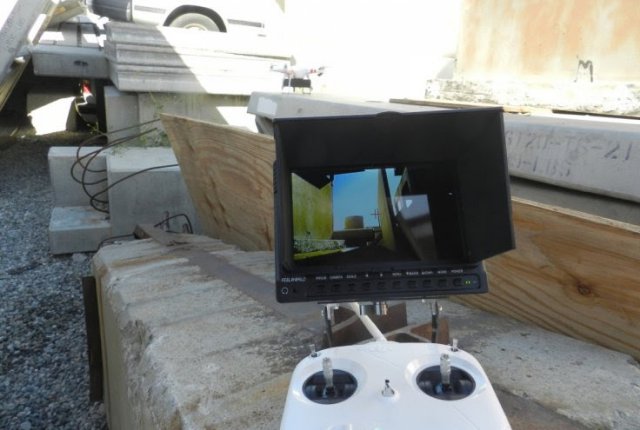A technology firm has developed a small robot module that clips on to any small drone and can be used to search for survivors from the air in a disaster zone.
IntelliNet Sensors, based in Orange County, California, has invented the Lynx6-A module, which can be easily clipped on to any small unmanned aerial vehicle (UAV), whether it is a low-end or high-end product. The module contains a small robot with an integrated micro HD video camera that uses an advanced ultralight sensor to detect heartbeats and breathing beneath rubble.
There are currently several methods used in the oil and mining industries, archaeology and emergency services to detect objects beneath ground level, including seismic sensors, radar detectors and K-9 police dogs.
In April, Nasa’s Finding Individuals for Disaster and Emergency Response (FINDER) radar detector was able to locate four survivors in two different collapsed buildings in the Nepalese town of Chautara in its first real-life disaster zone trial. The detector works by sending out low-power microwave signals, which penetrates rubble and collapsed walls, hits victims and then bounces back to the detector.
However, IntelliNet Sensors claims its robot module is more accurate than these methods, as seismic sensors can detect ground movement, but they are susceptible to environmental noise, and K-9s find it difficult to lock on to a scent for long in a windy environment.
“We measure the electromagnetic signal of the volume, which is different from radar. We have
an indication of the survivor’s chest movement from breathing, as well as the heartbeat of the person,” IntelliNet Sensors founder and president Dr Fred Mohamadi told IBTimes UK.
“Movement of the chest makes up part of the electromagnetic signal and the pressure of the heart transfers the same information but in a much weaker signal. With proper digital signal processing, we can filter to see breathing pattern versus the heartbeat.”
Multiple networked drones can detect groups of survivors
Mohamadi explained that while one drone armed with the robot module can detect one person trapped in the rubble, multiple drones equipped with the Lyn6-A robot module can network and work together to triangulate and identify the location of multiple trapped survivors in a disaster zone, using IntelliNet Sensors’ patented Sense-Through-The-Air technology.
The firm recommends using a localised network so data can be sent back by the drones via Wi-Fi or Bluetooth to a laptop running the Lynx6-A software, and IntelliNet Sensors can provide the infrastructure needed to set up the network.
“By remotely landing the sensor in multiple points, extreme efficiency in set-up and search time to detect trapped individuals can be achieved,” said Mohamadi, who invented the Lynx6-A system. “The rapid deployment within hard-to-reach areas allows first responders and law enforcement personnel to save many more lives in a highly stressful and noisy environment – a factor that traditional sensors are lacking.”
IntelliNet Sensors says it has over 10 granted patents and numerous patent applications pending for technologies in the Lynx6-A, which is now commercially available, and it is waiting for export approval to ship its solution overseas. However, the firm is not releasing information on how much the robot module will cost as it depends on the type of fixture and drone used.
“We have been developing the technology since 2007. Currently, emergency services in three countries have signed on to adopt the technology and the next phase will be to get police departments on board,” said Mohamadi.
“So far, we have demonstrated the technology with DJI Phantom drones to agencies in California and they have seen and monitored the performance of the solution. We hope to be able to release results of the solution’s performance in February 2016.”
Source: International Business Times

